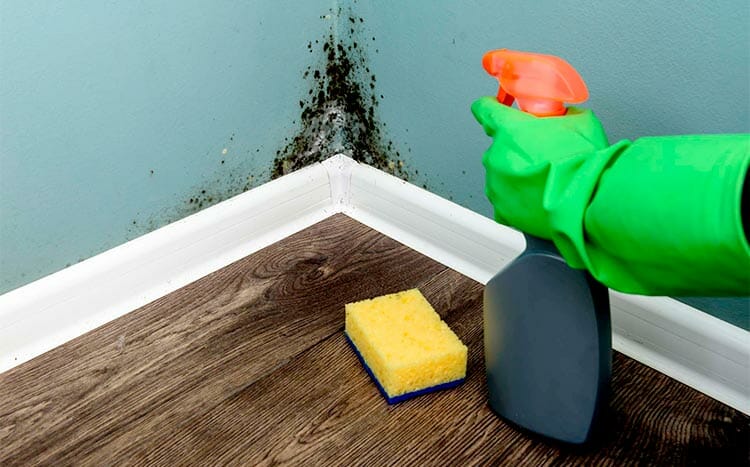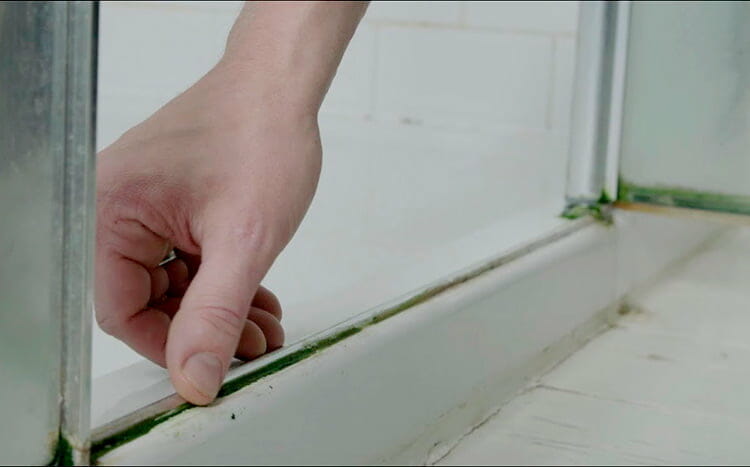Neglecting mold growth in residences can be detrimental to health. It has the potential to provoke serious allergic reactions and worsen respiratory problems. Furthermore, if it extends to cherished belongings, it can lead to unsightly stains, decreasing their value.
Alcohol kills mold. It is one of the most cost-effective and environment-friendly methods of preventing the negative effects of a mold attack. And what is even better is the fact that alcohol dries faster, which means that you don’t have to deal with the moisture problems that other mold-killing solutions present.
Here is what you should know about alcohol as a mold-killing agent.
Types and concentration of alcohol used for killing mold
When it comes to killing surface mold, almost all types of alcohol can work. This includes rubbing alcohol, denatured alcohol, and even alcohol types like vodka can work. And as far as the most effective type of alcohol and concentration that you should use, isopropyl alcohol that has a concentration of 70% is the best.
Generally, while higher concentrations might have been theoretically better at killing better, they tend to have higher rates of evaporation. Therefore, they tend to evaporate too quickly for them to effectively get rid of mold. As a result, a concentration of 70% has the right balance in terms of alcohol content and the ability to remain in a liquid state long enough to effectively kill the mold.
In the current market, the Swan 70% Rubbing Alcohol and the NRG Alcohol Isopropyl are great examples of alcohol that you can use to effectively get rid of surface mold in your home. And if you don’t want to buy commercial-grade isopropyl alcohol, and you have a bottle of vodka lying around, you can use it too. Vodka is especially great at killing mold because it contains a higher concentration of acetaldehyde and other congeners. These compounds are more potent when it comes to cleaning mold, something that makes vodka an ideal choice for home use.
However, if you still need an alternative method of clearing the mold, then picking up a bottle of vinegar from your kitchen and then spraying it on the moldy surface will also work.

Steps to kill mold by alcohol
If you want to effectively remove mold by using alcohol, you need to follow the following steps.
Wear protective gear
Breathing mold spores can lead to respiratory complications. It can also trigger severe allergic reactions. Therefore, the first thing that you should do is to protect your nose, eyes, and skin from the negative effects of these spores.
To protect your lungs, you should wear a good respiratory mask. For your eyes, a pair of goggles will do. And for your hands, rubber gloves will be perfect. Also, wearing a long-sleeved shirt and long pants will help to shield your skin from the irritation that the spores can cause.
Scrape and scrub
After wearing protective gear, you should proceed to remove excess mold from the surface that you intend to clean. A potty knife or a rough scrubbing brush will do this process. And after you are done, collect the mold, place it in a plastic zip bag, and dump it in the trash bag.
Vacuum the surface
The next step is to remove any remaining spores and dirt on the surface. Use a vacuum with a HEPA filter to get rid of any remaining particles.
Create your mold-killing solution
To create the mold-killing alcohol solution, take the alcohol and pour it into a plastic container. Take an equal amount of water and then mix the two in such a way that you mix one part alcohol with one part water. And after you are done pour the resulting solution into a spray bottle.
Spray the solution
Spray the moldy area with the solution until it gets soaked in it. You can also use a soft brush to dislodge stubborn particles or stains. And after you are done, let it sit for about 15 minutes.
Wipe or blot
After the 15 minutes have elapsed, use a piece of cloth to wipe off or blot any excess moisture that may be remaining on the surface. This is absolutely necessary to make sure that the moisture doesn’t promote any further growth of mold. And to further reduce any chances of a regrowth happening, you can place the item in the sun so that it can dry in direct sunlight.
How to prevent mold from growing back
Unfortunately, even after killing and removing mold, regrowth can always happen. The good news is that there are things that you can do to reduce the chances of this happening. Here are a few things that you can do to effectively keep mold from growing back.

Fix the underlying cause of the mold growth
If you have a plumbing leak or a roof leak, or if the area is susceptible to water and food spills, then you should take care of this problem even before removing the mold. This is because for as long as there is a moisture problem in your home, the chances of a mold regrowth happening are high.
Make sure you properly dry the area/surface after mold removal
Water is usually used as part of the mold-cleaning solution. Whether you are using alcohol, vinegar, baking soda, or even commercial-grade mold cleaners, using water is typically necessary. Unfortunately, moisture is also to blame for the presence of mold. Therefore, if you fail to remove all the moisture from the area that you are cleaning, you will inadvertently be encouraging new mold growth.
As a result, making sure that you sun-dry the surface is always recommended if you want to keep mold from coming back. And in cases where you can’t, properly blotting the area with a cloth to remove excess moisture is mandatory. Using fans in order to improve air circulation is also encouraged in order to speed up the drying process.
Invest in a dehumidifier
No matter how thorough the mold cleaning process is, if a home has high humidity, chances are that the mold problem will come back. An easy way of addressing this problem is to invest in a good dehumidifier. The humidifier will actively get rid of excess moisture in the air, and in so doing, will help to keep mold a bay.
Use mold-resistant paints, wallpapers, and fixtures
Remodeling your home by using mold-resistant materials can also help to keep your home mold-free. This includes using mold-resistant paints, wallpapers that are resistant to mold, and wall materials like drywall that don’t even give mold a chance of growth.
These materials usually have characteristics that withhold one or two conditions that mold needs to grow and thrive. It may be that they are moisture-resistant. It can also be that they are made of materials that don’t provide mold with the base/food that they need to grow.
Use professional mold removal services
Sometimes, mold grows back simply because a homeowner didn’t do a good enough job as far as removing all the mold is concerned. This is so especially in cases where the growth is extensive and includes hard-to-reach areas such as air conditioning ducts and behind walls. In such cases, having a professional deal with the mold problem is the best way of guaranteeing that the mold won’t grow back.
Pros of using alcohol to kill mold
Using alcohol to kill mold is beneficial because of the following reasons.
- It is readily available
- It is a cheap solution
- It is environment-friendly
- It dries up fast, which means less time trying to dry off moisture after cleaning
- It actually works
Cons of using alcohol to kill mold
While alcohol can kill mold, it is sometimes not the best solution for getting rid of mold in homes. Here are the disadvantages of using alcohol to kill mold.
- It doesn’t kill mold spores
- Not ideal when dealing with extensive mold growths
- Not as effective at killing mold as commercial-grade solutions or vinegar
The types of mold found at home
The following are the most popular types of mold found in homes.
Type 1: Aspergillus Mold
As far as the most popular type of mold found in homes, aspergillus mold takes the crown. It comes in a variety of colors. This type of mold encompasses over 185 species and its color usually depends on the species and the conditions under which the mold grows.
Type 2: Cladosporium
This is a type of mold that loves growing on carpets, upholsteries, and fabrics. And it usually thrives in both cold and warm conditions.
Type 3: Stachybotrys
This is the type of mold that is commonly referred to as black mold. It has a reputation of causing severe allergic reactions. And even though it is popularly referred to as black mold, it comes in a variety of colors including green.
Type 4: Trichoderma
This is mold that typically attacks moist and wet surfaces. It usually presents as green and white patches.
FAQ's
Is alcohol or vinegar better to kill mold?
Vinegar is better at killing mold than alcohol. This is because studies show that vinegar can kill up to 80% of mold varieties. This is a far higher percentage than what alcohol can boast of. There is also the fact that vinegar usually helps to eliminate moldy smells. This is something that alcohol isn’t as good at doing, which makes vinegar a far much more superior cleaning solution.
What kills mold permanently?
Vinegar, baking soda, and commercial-grade mold-killing solutions kill mold permanently. However, using them is usually no guarantee that you won’t ever have mold because mold spores exist naturally, and provided there is moisture and a base for mold to grow, mold will always grow.
What kills black mold?
A mixture of vinegar and baking soda can kill black mold. Commercial-grade cleaning solutions that are used by professionals can also kill black mold.







